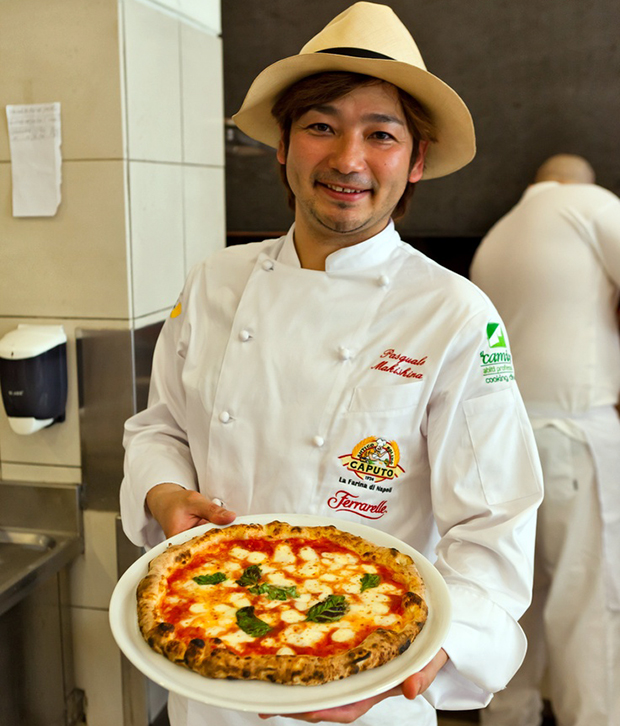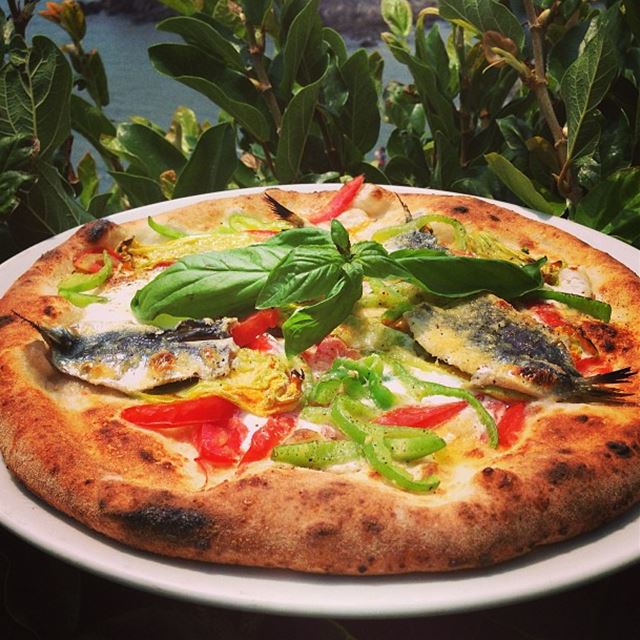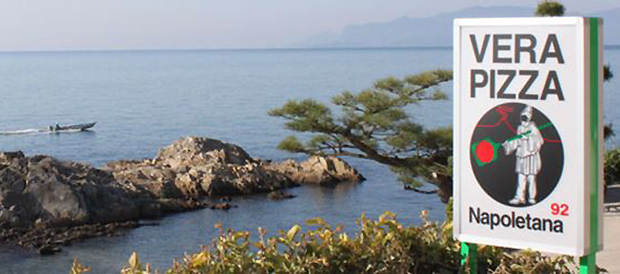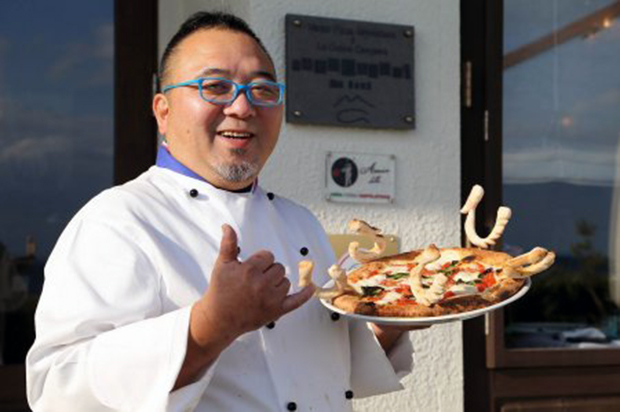
How this Japanese chef mastered Neapolitan pizza
The amazing story of how Japan became one of the best places in the world to enjoy 'real' Neapolitan pizza
As well as their fantastic design sense, the Japanese are also known for their culinary sophistication, high manufacturing standards and deep understanding of cultural minutiae. So, it shouldn’t come as a surprise to learn that, when it comes to reverse-engineering one of the world’s most popular dishes, Japanese pizzaioli have mastered the art of the Neapolitan pizza.

“According to regulations set by the VPN Association (Vera Pizza Napoletana) the dough for true Neapolitan pizza must be made with flour highly refined to the doppio zero (“00”) grade,” writes the food critic and pizza expert Daniel Young, in our new book, Where to Eat Pizza. He goes on to list a whole series of measures and standards that must be met including pH level, density and even cooking temperature.
The finished Margherita pizza must be soft and elastic, its mozzarella appearing over the tomato in evenly spread white patches. In Japan the number of pizza places proudly displaying the VPN seal of approval is limited to just 54, placing them third among pizza-loving nations, behind only Italy, with 200, and the USA, with 77. France, Germany, and the UK each have one.

“The Japanese pizza makers need something to show they’ve achieved a very high standard,” explains Rossella Ceccarini, who holds a PhD in global studies from Sophia University in Tokyo. “This certifies the authenticity of what they’re doing.” Often the Japanese are pursuing a made-in-Naples look, too. Though Neapolitan pizza does not require a Neapolitan-made oven, hundreds of custom-built, wood-fired pizza forni have been imported to Japan from Naples.
"Akio Nishikawa, the Japanese pizza pioneer who apprenticed in Campania under Neapolitan pizza masters Gaetano Esposito and Gaetano Fazio, didn't only take lessons learned home with him to Sakuragumi, his Neapolitan pizza shrine in the Hyogo Prefecture. He also ordered a custom-built oven by master craftsman Gianni Acunto to bake pizzas made with imported Caputo “00” flour, San Marzano tomatoes, and Mozzarella di Bufala Campana DOP.
“You have to preserve the tradition if you wish Neapolitans to be moved when they eat your pizza,” says Nishikawa. It is the prize-winning Japanese pizzaioli trained in Naples who appear most regularly on Japanese television. But recognition from their Italian masters some 6,000 miles (9,656 km) away is valued more.

“They learn from the masters,” says Antimo Caputo of Molino Caputo. “They follow everything. They try to be perfect.” Akinari “Pasquale” Makishima of Pizzeria Trattoria Cesari in Nagoya adopted his middle name to honor Pasquale Parziale, the first of his Neapolitan mentors. “It is common among Japanese pizza makers who have lived in Italy to be linked to a maestro pizzaiolo,” notes Ceccarini. “Apprenticeship is highly valued in Japanese society. The disciple copies the sensei [teacher]. Only when he has mastered the art is innovation allowed.”
“Years after winning the best pizzaiolo prize at the 2010 International Pizza Championship in Naples, Makishima still refuses to modify the instructions of his Neapolitan pizza sensei. He won’t even cut back on salt to suit prevailing Japanese tastes. “If you reduce the formulation of salt,” insists Makishima, “it’s no longer pizza Napoletana.””
To learn more about one of the world’s most popular dishes, and, crucially – which restaurants, food trucks and take-aways offer the best – order a copy of Where to Eat Pizza here.